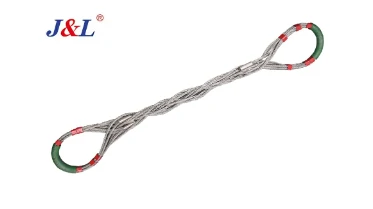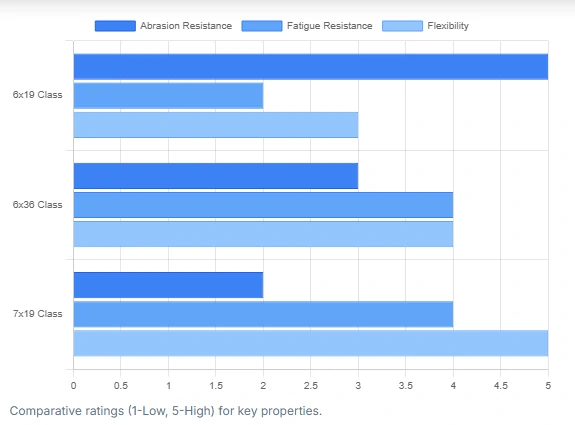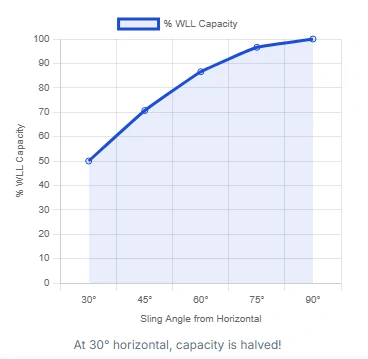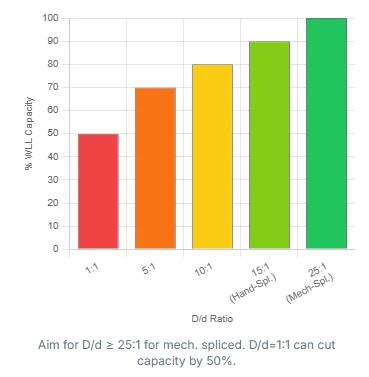Mastering Wire Rope Sling Capacity
June 4, 2025

The Unseen Strength: Why Accurate Sling Capacity is Non-Negotiable
Wire rope slings are industrial workhorses, but their safe use hinges on precise capacity calculations. Miscalculations aren’t minor errors; they’re critical oversights leading to equipment failure, injuries, and severe financial loss.
Prevent Catastrophes: Overloading can cause dropped loads, severe injuries, even fatalities. Accurate WLL knowledge is your first defense.
Ensure Compliance: Adhere to OSHA & ASME standards. Proper calculations are a legal and ethical mandate for workplace safety.
Maximize ROI: Prevent premature wear and equipment damage, extending sling lifespan and reducing operational downtime.
Decoding the Sling: Anatomy of Strength
Understanding a sling’s construction and configuration is crucial for selecting the right tool and assessing its capacity.
Wire Rope Constructions
Different arrangements of wires and strands (e.g., 6×19, 6×36, 7×19) dictate flexibility, abrasion resistance, and fatigue life. Choose based on application demands.

The Core Truth: FC vs. IWRC
The core supports the strands. Fiber Core (FC) offers flexibility, while Independent Wire Rope Core (IWRC) provides strength and crush resistance. IWRC adds ~7.5% to rope strength.

Hitch Configurations & Capacity Impact
How a sling is rigged drastically changes its lifting capacity. Know these common hitches:
Vertical Hitch Capacity: 100% WLL Direct pull, full rated capacity.
Choker Hitch Capacity: ~75% WLL* *If choke angle < 120°. Never choke on fittings.
Basket Hitch (Vertical Legs) Capacity: ~200% WLL Distributes load on two legs. Ensure balance.
Multi-Leg Bridle Capacity: Angle Dependent Angles greatly reduce capacity. Lower angle = higher stress.
The Calculation Core: Key Factors Influencing Capacity
Beyond the tag, several factors dynamically alter a sling’s true lifting power in the field.
MBL to WLL: The Safety Foundation
Minimum Breaking Load (MBL) is the rope’s ultimate strength. Working Load Limit (WLL) is the safe max load.
WLL = MBL / Safety Factor
Typically Safety Factor is 5:1 (general) or 10:1 (personnel).
Example: MBL 25,000 lbs, SF 5 ➔ WLL 5,000 lbs.
The Angle Factor: A Critical Tilt
Sling angle dramatically impacts tension. Smaller horizontal angles significantly reduce capacity.

D/d Ratio: Bend Without Breaking
Diameter of Curvature (D) to rope diameter (d). Small D/d ratios reduce strength significantly.

The Calculation Pathway: Step-by-Step
Follow this systematic approach to determine safe wire rope sling capacity for your lift.
1.Find MBL(Manufacturer Spec)
2.Apply Safety Factor(WLL = MBL / SF)
3.Adjust for Sling Angle(Reduces capacity)
4.Account for Hitch Type(Choker, Basket, etc.)
5.Consider D/d Ratio(Impacts efficiency)
6.Safe Lift Capacity!(Consult expert if unsure)
Example: 1″ IWRC sling (MBL 100,000 lbs), SF 5, in a 2-leg bridle at 45° horizontal.
1. WLL (Vertical per leg) = 100,000 / 5 = 20,000 lbs.
2. Adjusted WLL per leg (45°) = 20,000 lbs * 0.707 = 14,140 lbs.
3. Total Adjusted WLL (2-leg bridle) = 14,140 lbs * 2 = 28,280 lbs. (Assuming balanced load & good D/d)
Safety First: Practices & Pitfalls
Accurate calculations are vital, but a strong safety culture and diligent practices are equally important.
Vigilant Inspections: Your First Line of Defense
A competent person must inspect slings daily before use, with periodic detailed inspections (yearly for normal service, monthly/quarterly for severe).
Key Defects to Spot & Remove Sling For:
❗Missing/illegible ID tag
❗Broken wires (e.g., >10 in one lay)
❗Kinking, crushing, bird-caging
❗Heat damage or severe corrosion
❗Worn/cracked/deformed end attachments
❗Diameter reduction > 5%
Always remove damaged slings from service immediately!
Common Mistakes to Avoid
Steer clear of these common errors to ensure safety and prolong sling life:
✗Incorrectly measuring rope diameter.
✗Improper installation of wire rope clips.
✗Ignoring D/d ratio & not protecting slings at sharp corners.
✗Using damaged slings –NEVER DO THIS!
✗Overlooking environmental factors (heat, corrosion).
✗Inadequate lubrication and improper storage.
Best practice: ✔ Regular training for all personnel.
Learn more: Steel Wire Rope;Wire Rope Sling;Mooring Rope;Lifting Sling.
If you have any questions,welcome to contact us!
